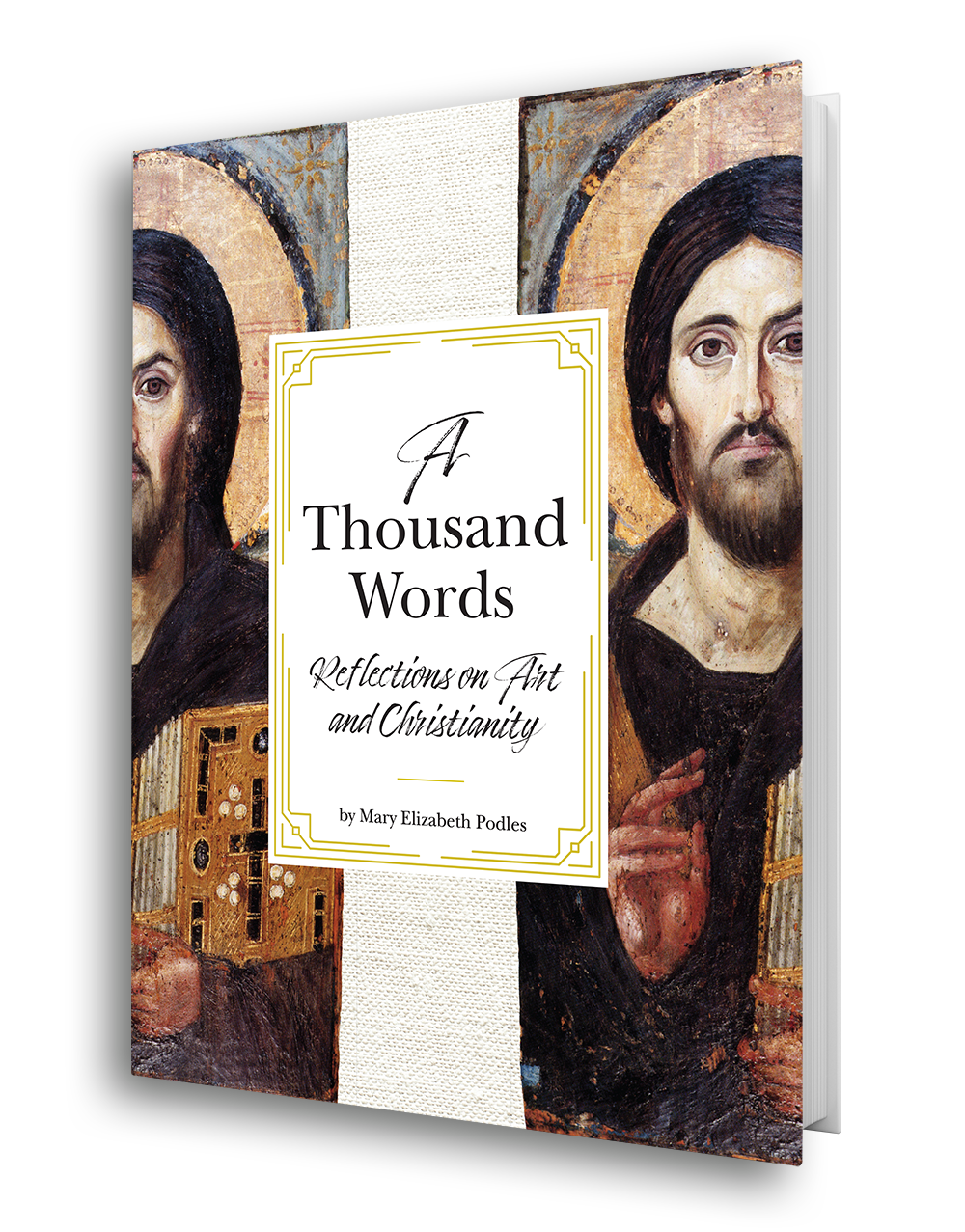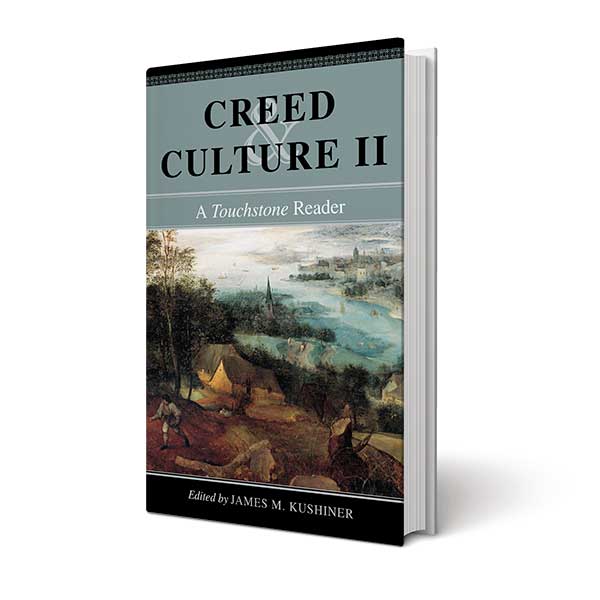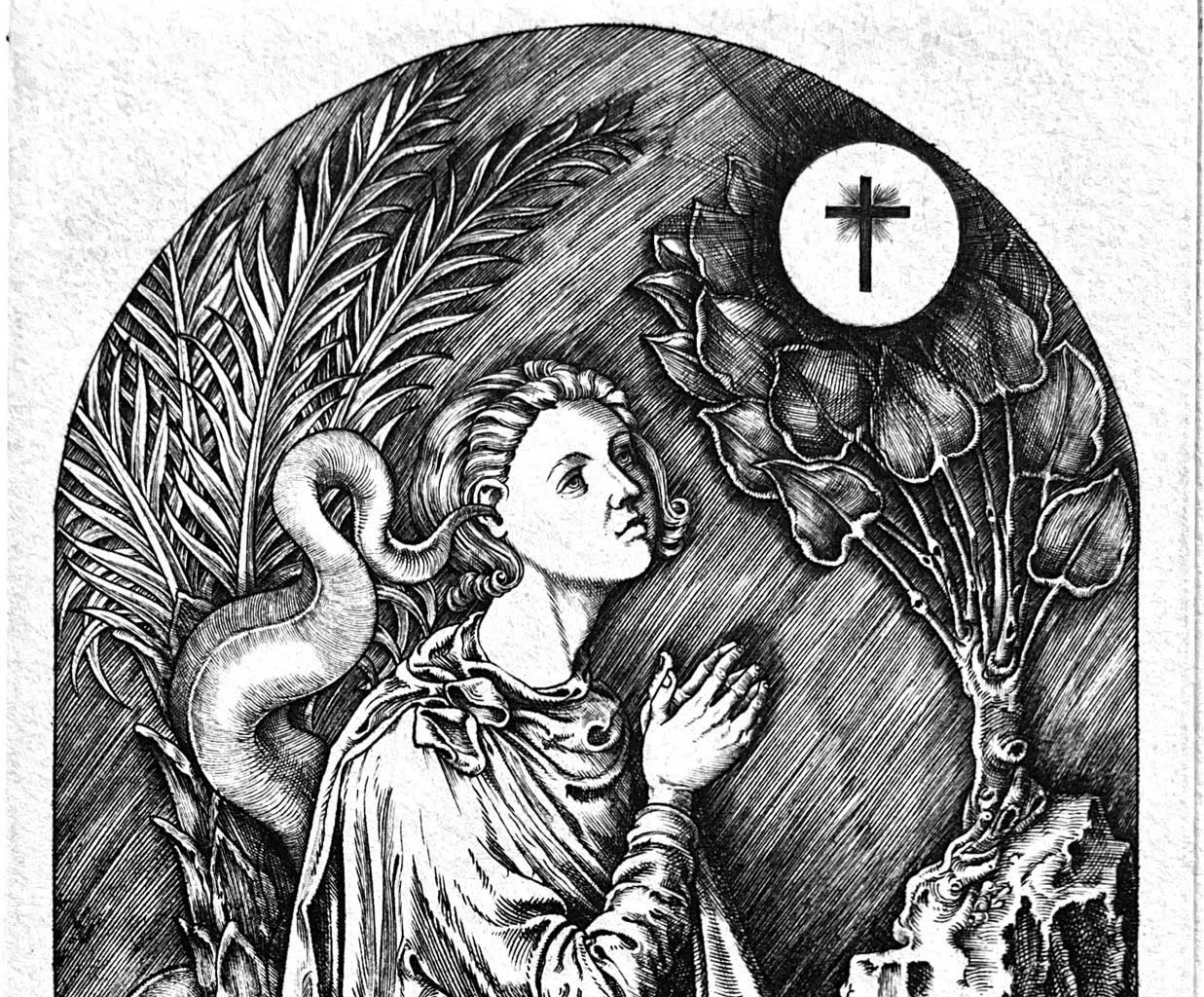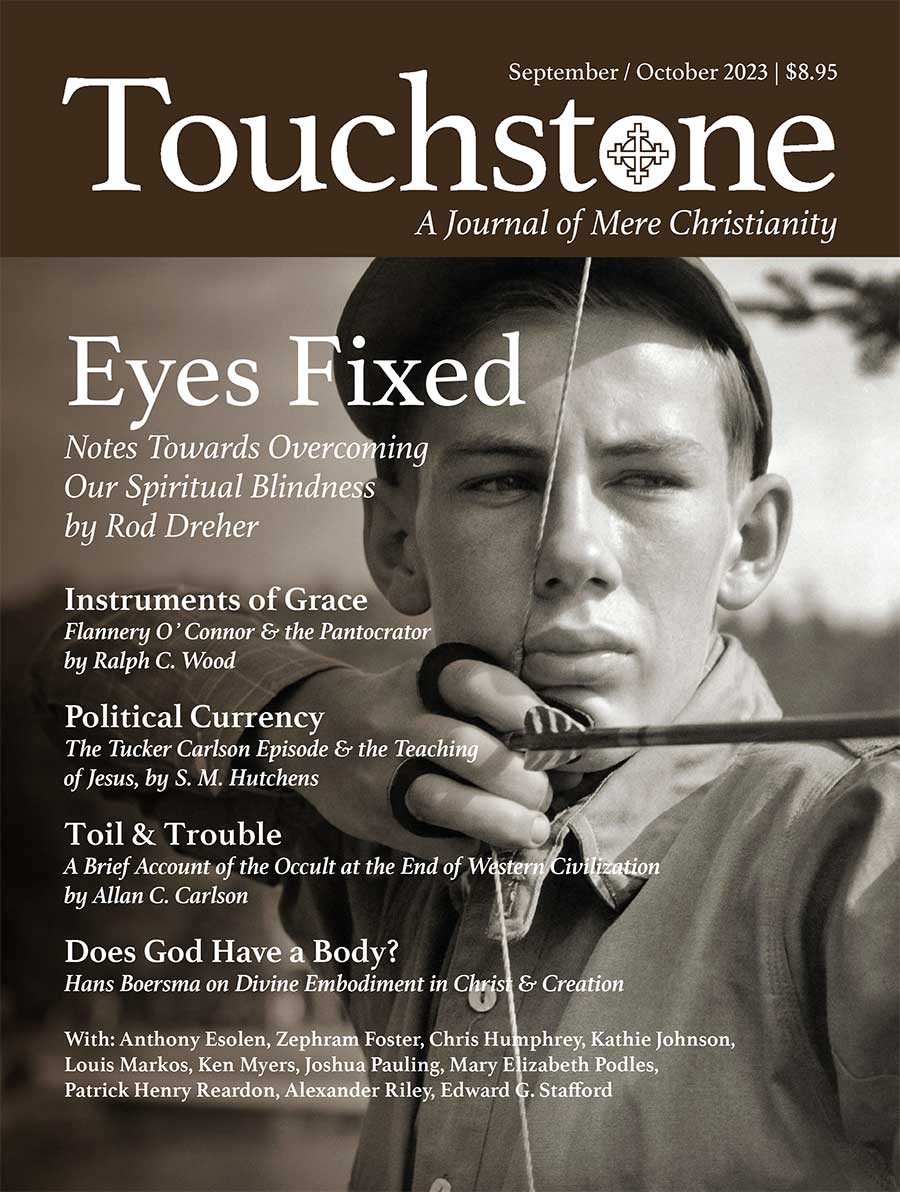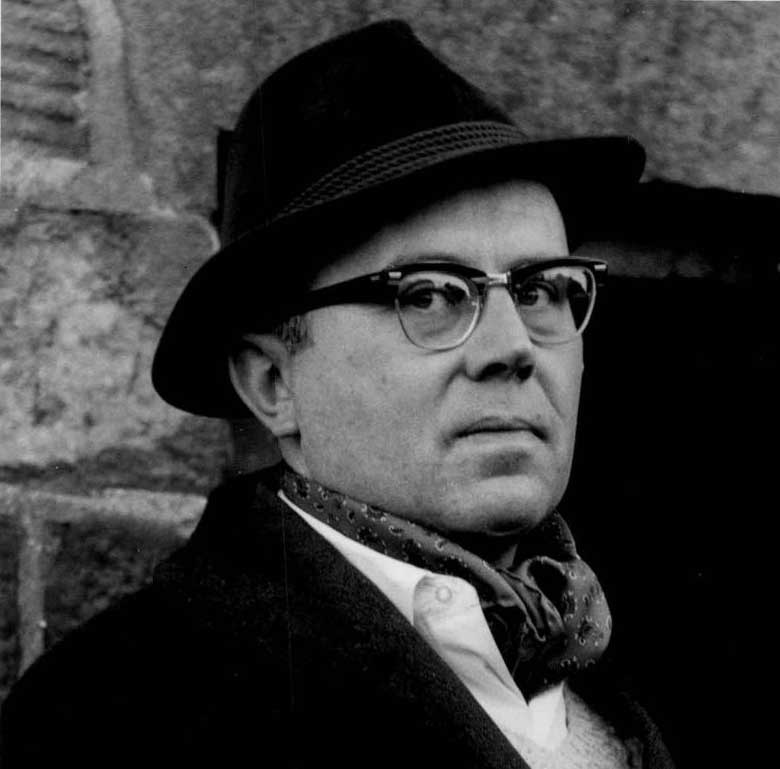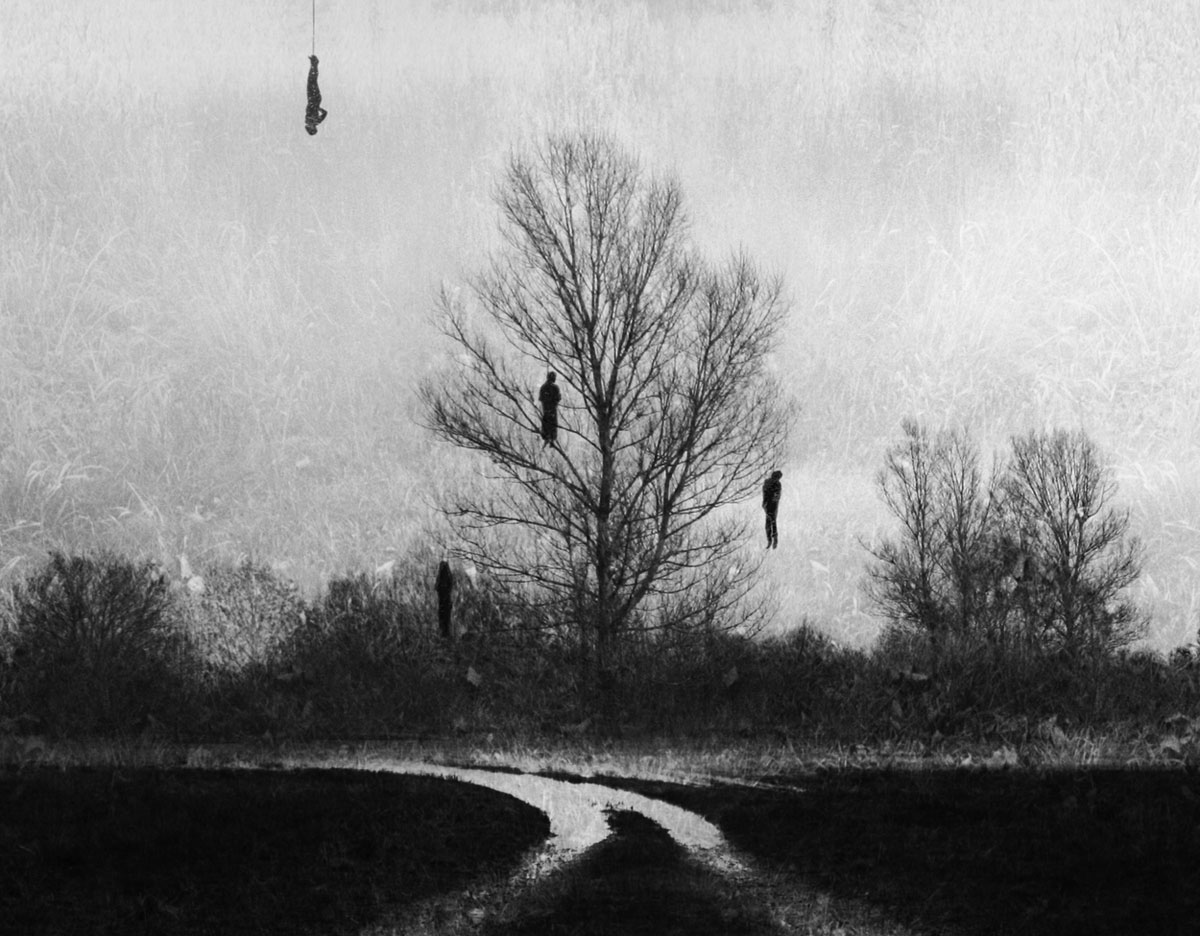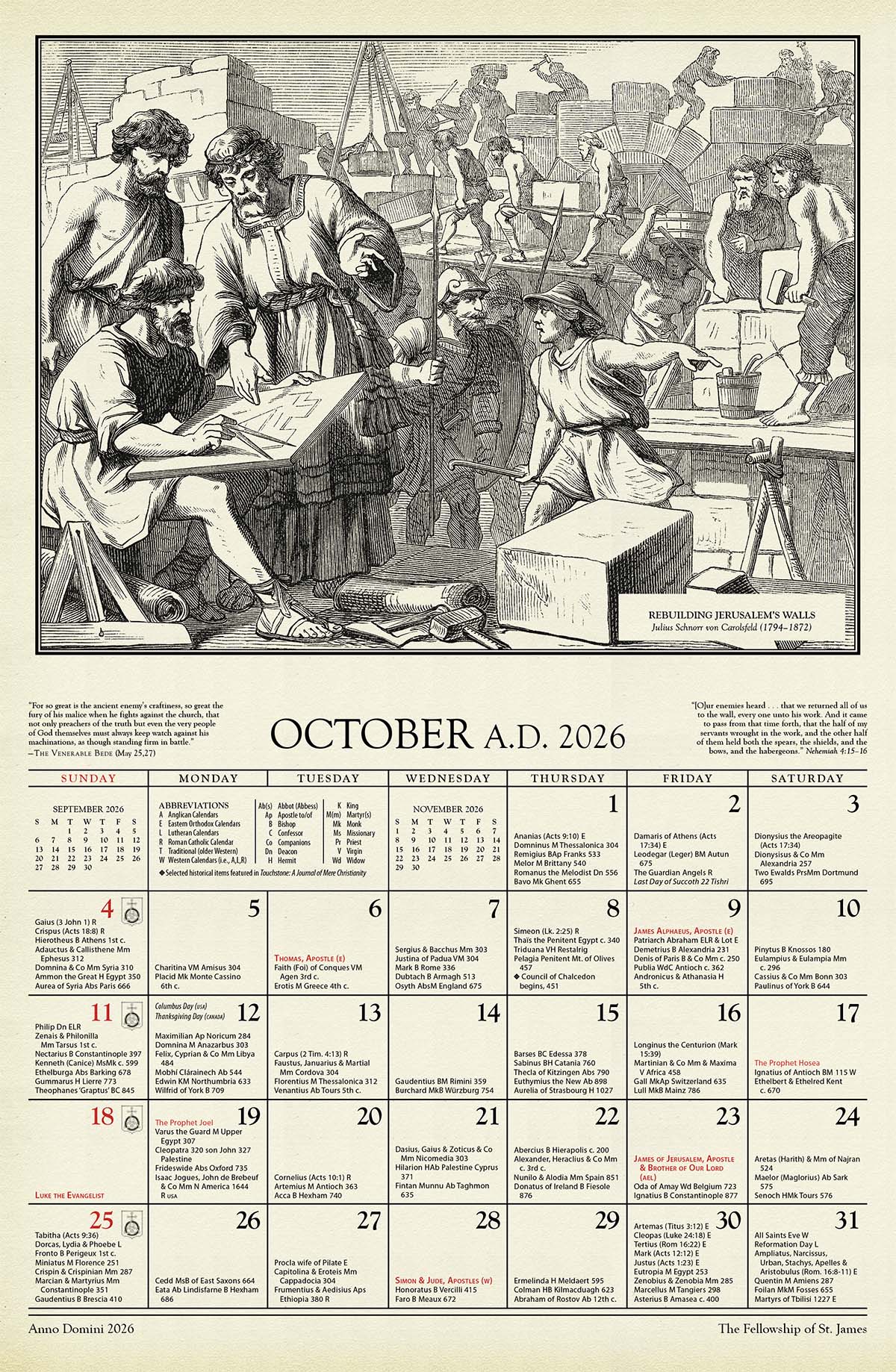Eyes Fixed
Notes Towards Overcoming Our Spiritual Blindness
Max Weber famously called the modern condition “disenchanted.” He meant that in the modern world, people in the West have come to value science and rationality more than religion. For truly religious people, said Weber, “the world remains a great enchanted garden.” But that is no longer true, even for most Christians, who may not realize the extent to which they have been formed by the structures of disenchantment. This is why Christianity seems so powerless today, having retained the form of the faith without its power.
The only way Christianity is going to survive this new Dark Age is by Christians recovering authentic Christian enchantment—or, to use an Orthodox phrase, coming to sense that God is everywhere present and fills all things.
When was the Western world last enchanted? During the pre-modern age, which ended with the High Middle Ages. The Renaissance and the Reformation ushered in modernity, and with it, disenchantment.
According to the philosopher Charles Taylor, in pre-modern Western Christianity, there were three basic bulwarks upholding its vision of the world: First, the belief that the world and everything in it are parts of a harmonious whole ordered by God and filled with meaning. All things that exist are signs pointing to God. Second, the belief that social relations are grounded in that higher reality. And third, the belief that the world is charged with spiritual force.
Medieval people experienced God as far more present in their daily lives than we do. In their minds, God’s presence wasn’t merely a matter of belief, but of experience. As they saw it, the spiritual world and the material world interpenetrated each other. The barrier between them was thin and porous. Medieval Christians believed that God was present everywhere, and revealed himself through people, places, and things, through which his power flowed.
The entire universe was woven into God’s own Being, in ways that are difficult for modern people, even believing Christians, to grasp. Christians of the Middle Ages took Paul’s words recorded in Acts—“in him we live and move and have our being”—and in his letter to the Colossians—“He is before all things and in him all things hold -together”—in a much more literal sense than we do.
Medieval Europe was no Christian utopia. The Church was spectacularly corrupt, and the violent exercise of power—at times by the Church itself—seemed to rule the world. Yet despite the radical brokenness of their world, medievals carried within their imaginations a powerful vision of integration.
In the medieval consensus, men construed reality in a way that empowered them to harmonize everything conceptually and to find meaning amid the chaos. The medieval conception of reality is an old idea, one that predates Christianity. In his final book, The Discarded Image, C. S. Lewis, a professional medievalist, said that for Christians of those days, regarding the cosmos was like “looking at a great building”—perhaps one like Chartres cathedral—“overwhelming in its greatness but satisfying in its harmony.”
Metaphysical Disconnect
Now, the fateful step away from the medieval model came in the fourteenth century, in a philosophical dispute between Catholic academics. The medieval model collapsed and was replaced by a model based on two concepts: “nominalism” and “voluntarism.” The upshot of this was that people began to regard God as somehow separate from Creation. Creation only meant something because the God who existed wholly separate from it looked at it and said it was meaningful.
This sounds like angels-dancing-on-the-head-of-a-pin stuff, but its importance cannot be overstated. Nominalists believed there was no inner meaning existing objectively within Nature, and discoverable by reason. Meaning was extrinsic—that is, imposed from the outside, by God—and accessible to humans by faith in him and his revelation alone.
In time, this metaphysical disconnect would lead to humanism, to the Reformation, to the Scientific Revolution, to the Enlightenment, and ultimately to the disenchantment of the Western world. Today, all Christians living in modernity are heirs to this event. This is what Taylor meant when he said that we live in a secular age: that even we who believe in God are inescapably aware that it is possible not to believe.
This radical shift in Western consciousness also made our immense wealth and technological superiority possible. If matter has no intrinsic meaning other than the meaning assigned to it by an outside source of authority, then we can treat it however we like. The contemporary historian Yuval Noah Harari says the story of the West is one in which people exchanged meaning for power.
The problem is that we cannot live with disenchantment. Modern man busies himself creating idols to fill the God-shaped hole in his heart. The idol can be political ideology. It can be sexual excess, including the notion that we can change our sex through surgery and legal procedure. It can be consumerism. We can also distract ourselves from the question of ultimate meaning by losing ourselves in various pursuits, especially those generated by technology.
It’s important to grasp that this condition primarily affects people in the West. A decade or so ago, Harvard researcher Joseph Henrich noticed a major problem in the field of psychology. It turns out that almost all the research done on human psychology was done on Western people by Western people. It was assumed that all human psychology is the same. In fact, as Henrich points out, the psychology of Western people differs significantly from the psychology of people who have not gone through modernity to the extent that we have.
Henrich says that people living in the West are W.E.I.R.D.—an acronym standing for Western, industrialized, individualistic, rich, and democratic. We modern Westerners are true outliers in human experience, not only historically but also in the world today. All kinds of implications stem from this finding, but the important one for our purposes is that we of the disenchanted Western world, for all our material superiority, are virtually alone in our disenchantment.
Drawn to God
Since the Enlightenment, at least, we have been making progress into darkness. When you are going the wrong way, the first thing you need to do is to turn around. I propose that the disenchanted, de-sacralized West is a world living in a lie.
I also propose that most of us Christians have accepted this lie—not consciously, but in the way we lead our lives. A few years ago, I talked to the sociologist of religion Christian Smith, who has spent a lot of time studying the spirituality of young Americans. He said that if we want to get young people back to church, we can’t do it by focusing on morality or by making rational arguments for the faith. We have to do it some other way.
I believe that way has to be the way of wonder—that is, of rediscovering the miraculous and the mysterious at the heart of our faith.
When still a cardinal, Pope Benedict XVI said that the best arguments for the faith were not rational propositions but the art that the church produces—that is, beauty—and the saints the church produces—that is, holiness. C. S. Lewis once wrote:
We do not want merely to see beauty, though, God knows, that is bounty enough. We want something else which can hardly be put into words—to be united with the beauty we see, to pass into it, to receive it into ourselves, to bathe in it, to become part of it.
That is to say, we want to participate in beauty. In the same way, when we are confronted by true holiness in a saintly person, we somehow want to unite with it. This sanctified eros—this desire to be made holy—draws us to God.
I can testify to the truth of this from my own experience. As an older teenager, I had left the faith behind. I thought it dull, really only an expression of middle-class morality and propriety. Then, when I was 17, I went to Europe and was taken by a tour group to see the medieval French cathedral of Chartres.
I stood there poleaxed by awe in the labyrinth in the nave, and I knew beyond a shadow of a doubt that God exists. A sense of wonder overran all my intellectual defenses. I walked in as a sullen, know-it-all kid, and walked out changed, wanting to know the God who inspired men 800 years ago to build such a temple to his glory.
I didn’t leave re-converted, but I did leave there on a search. The experience of awe opened my mind to considering arguments I had never considered before. I finally became convinced of the truth of Christianity, but held something back. I did not want to yield all my will to Christ. And then, one day in 1991, I was sent as a young journalist to interview a very old Catholic priest. He had been an atheist as a young man, but in his forties gave his life to Christ, and then to the priesthood, after experiencing two dramatic miracles. As the old priest told me these events from over fifty years earlier, he wept, as if they had happened the previous week. I knew that I was in the presence of a saint, of a man whose life changed dramatically because of God manifesting himself to him miraculously.
I knew that I, too, had to surrender everything to Jesus Christ. And so I did. Since then, I have experienced a number of mystical events. I have no doubt that God is real and that he is active in our daily lives in ways that we can see, if only we open our eyes to his design in our lives.
St. Galgano & Me
I have long told people that Christian hope is not optimism but rather the firm conviction that, no matter how bad things get, our suffering is not in vain. Ultimate meaning exists. One of the greatest challenges of the Christian life is to maintain faith in the face of pain and evil. I have found that nothing renews my faith in Christ amid the storm and stress of this mortal life as much as having my mind turned back to awe and wonder.
We all struggle with this to some degree. My mind was turned to wonder in particular by a series of mysterious events that started one night in Italy, in the year 2018. I had given a speech about the Benedict option at a church in Genoa, to a large crowd. As people were leaving, an older man pushed through the crowd to get to me. He reached me at the front, apologized for his English, and said that he was an artist and a Christian. This man, named Luca Daum, told me he had been praying in his studio that afternoon, and the Lord told him to go hear the American talk that night, and to give him a particular drawing that Daum had done.
He handed me a manila folder. I took out the drawing and found a beautiful print of a medieval saint kneeling down in front of a sword in a stone. His eyes were cast heavenward, towards a cross in the sun. But out of his ear a serpent coiled toward the ground. The serpent had a human face and was trying to distract the saint. The title of the drawing was “The Temptation of St. Galgano.” “Who is St. Galgano?” I asked the artist. But his English was too poor to answer. So in my hotel that night, I looked him up.
Galgano Guidotti was a medieval rascal who was part of the lower nobility in Tuscany. He was a violent man, but his mother prayed constantly for his conversion. Once, while riding his horse near a steep hill in the countryside, he heard a voice telling him to put his sword down and serve the Lord. Galgano ignored it. Then his horse began taking him to the top of the hill, against his will. When he reached the top of the bare hill, he had a vision of a round church. Standing outside it were our Lord, the Virgin Mary, and the twelve apostles. The voice once again told Galgano to put down his sword and serve Christ. Galgano told the voice that it would be easier for him to stick that sword into the rock in front of him than to do what the voice asked. He brought the sword down onto the stone—and it sank in, almost to the hilt. You can go see it to this day, in the countryside south of Siena.
Galgano immediately converted. He spent the rest of his short life living there by the sword in the stone as a hermit. His fame spread. Pilgrims came from all over to have him pray for them. There were healings. When he died, bishops and abbots came to his funeral. His bishop built a round church over the sword in the stone, in accord with Galgano’s vision. Some years later, monks built a large abbey not far from the hilltop. Rome sent a cardinal to investigate his life story, to see if he was a saint. The Vatican still has the written records of that investigation.
I was amazed to learn that in the hotel room that night. And there’s more: Italian scientists in the year 2000 went to the chapel to test the sword in the stone. They found that the metal was in fact from the era of the legend. And it did pierce the stone, just as the story said.
Fascinating, I thought—but what did it have to do with me?
Well, two years passed, and I grew more and more despairing over my failing marriage. My wife and I had been having terrible trouble for eight years. Nothing worked. I was sinking into depression. All I could think about was the happy marriage I once had. In June 2020, I compelled myself to do something I had not done for a long time: go to confession. When I came home that night, I was exhilarated. A spiritual burden had been lifted. Though everybody else was in bed, I was too excited to sleep. I decided to watch a movie.
In those days, I was into the films of Andrei Tarkovsky, who died in 1986, in exile from the Soviet Union. He is considered one of the greatest filmmakers of all time. In 1983, shortly after leaving his homeland for exile, he made a movie in Italy called Nostalghia. That night, I found the movie on Amazon, realized I hadn’t seen it, and sat down to watch it.
It’s about a Russian writer trying to work in Italy on a book project, but he can’t get anywhere because he’s obsessed with the family he left behind back in Russia. The man is deeply depressed, because he’s stuck inside his head. Watching the movie, I thought, “This is about me.”
A key scene is a dream sequence in which the writer walks across the nave of a ruined church. We hear the voice of a woman asking the Lord to speak to the writer, who is so lost. The Lord responds, “Would he even hear me if I did?” Then she asks God to let the writer feel his presence. The Lord responds that he reveals himself to the writer every day, but the writer can’t see. I thought, “Yep, that is definitely me. I am so locked into my head, brooding on my hopeless marriage, that I am sure I miss God’s grace all the time.”
When the movie ended, I went online to find out where that beautiful ruined abbey was. Imagine my shock when I discovered it was the Abbey of St. Galgano! I knew for certain I had received a message in a bottle, calling me deeper into this mystery. A year later, I made a pilgrimage to the sword in the stone and prayed there for God’s guidance. And soon thereafter, I had a book contract to write about Christian re-enchantment.
Fostering Re-enchantment
Are there things we can do to increase our ability to perceive God’s presence all around us? I’m finding out that yes, there really are. But first I should say that the effect of re-enchantment is not really to turn on some mysterious faculty of our consciousness that allows us to experience miracles. No, re-enchantment is simply a matter of experiencing God’s grace and presence in everyday life, at a deep level. Re-enchantment is about learning to see the enchantment that is already there. It brings us out of our heads and closer to the living God. It teaches us that the world is charged with spiritual force, and that everything has ultimate meaning.
Re-enchantment is primarily about rediscovering how to pay attention. Only by sustained attention do we gain the ability to perceive the enchantment that is already there, pulsing through life. But there’s more to it.
One of the best guides I have had along this path is Stanford University anthropologist Tanya Luhrmann. She has written extensively about the phenomenon of religious faith—specifically, how people come to believe that they are in contact with gods and spirits. Luhrmann says there are four aspects to the lives of those who are in contact with God.
First, she says, “talent and training matter.” She means that some people have a natural ability to relate to the numinous real. But all of us can develop that ability through spiritual training—that is, through developing prayer disciplines, through fasting, and so forth. You cannot expect the world to appear as enchanted to you if you cannot still your mind enough to pray, and to pray on a regular basis. If you want God to communicate with you, you have to commit to communicating with him.
Second, Luhrmann has found that those who are able to communicate with God have filled their minds with sacred stories, such as biblical accounts, events from the lives of the saints, tales of contemporary miracles, and so forth. These stories make the abstract teachings and principles of the faith concrete for ordinary people.
Third, says Luhrmann, if we want to experience God as real, we have to have a clear “faith frame” that tells us who God is and how he works. And fourth, we have to conceive of our mind in the proper way.
Whatever our confession, many of us modern Christians have rendered God tame and controllable. We tend to confine God within frameworks that—whether we mean them to or not—limit God’s power in our lives, for the sake of making religious experience controllable.
The real world is much wilder than our theologians think! Talk to any missionary who has lived in the Third World, especially Africa; he knows that the spiritual world is vividly real. We have to ask ourselves if the faith frame through which we interpret the world is too narrow or too rigid. Theologian Herbert McCabe says that when we speak of God, we do not clear up a puzzle; we draw attention to a mystery. If we do not leave a lot of room in our faith frame for mystery, then we should not be surprised if our faith seems feeble against the dragon of disenchantment.
Christians of the pre-modern era—in fact, all pre-modern religious people—would find our tame modern approach to religion to be strange. Historian of religion Mircea Eliade, in his classic book The Sacred and the Profane, says that for ancient people, God was not the god of the philosophers. Encountering him was “holy terror”—meaning they were struck by total awe at the fullness of his glory, his might, and his very being.
Eliade says that for religious man, the desire to live in the sacred is really a desire to live in communion with ultimate reality. When something is deemed sacred, it becomes really real—a sign and symbol of ultimate reality.
Even though we Christians believe God is everywhere, we build houses of worship as sites that are saturated with holiness, and go to them to commune with him. Eliade writes about the ways ancient peoples had of establishing communication with the transcendent realm—as do primitive tribes today. About some Australian aborigines, he writes, “Life is not possible without an opening toward the transcendent; in other words, human beings cannot live in chaos. Once contact with the transcendent is lost, existence in the world ceases to be possible—and the tribespeople let themselves die.” The same thing is happening today in America and throughout the West: we have lost contact with God, and we are thereby killing ourselves.
Left-Brain Dominance
That brings us to the mind. Tanya Luhrmann says that the way we think about our own minds has a lot to do with whether or not we will be able to sense God’s presence. Western people, she says, believe that the mind is a “citadel” standing apart from the world. Non-Western people, by contrast, believe that the mind is far more porous to the world. It acts more like a radio receiver and transmitter.
The work of psychiatrist Iain McGilchrist has revolutionized my way of thinking about the mind and its relationship to reality. Dr. McGilchrist has a theory of culture based on neurology. I can’t begin to do justice to it here, but let me give you the outline.
We all know that the brain’s two hemispheres have different functions, though they certainly work together. The right brain is more focused on seeing the whole picture and on appreciating the flow among phenomena. The left brain is more logical and abstract, focusing on details. A healthy mind uses both sides in balance.
McGilchrist’s argument is that, in the modern world, we have made ourselves slaves to the left-brain vision of the world. The left brain doesn’t care about meaning, really; it only wants to understand the world so that it can manipulate it, so that it can exert power over it. In modernity, we have come to believe that the most accurate way of knowing comes through science, the quintessential left-brain activity. In fact, says McGilchrist, there are some truths and realms of experience that can only be known through the right brain and that can only be expressed in the languages of music, poetry, art, and all manifestations of beauty.
According to McGilchrist, in modern times, we have conditioned ourselves to accept the limited vision of the left brain because it gives us power. He writes:
We are like someone who, having found a magnifying glass a revelation in dealing with pond life, insists on using it to gaze at the stars—and then solemnly declares that if only people in the past had had such a wonderful magnifying glass to look through, they’d have known that, on closer inspection, stars don’t actually exist at all.
McGilchrist says that we are going to destroy ourselves if we don’t rediscover a sense of wonder, of radical amazement in the face of Creation. This is done chiefly by going back out into nature, by listening attentively to music, by learning to love poetry, and by worshiping and praying. He writes: “It will come as no surprise, then, that a disposition towards God is largely dependent on the right hemisphere, the hemisphere that we already know brings us closer to truth than the left.”
The lesson here is this: if we want to learn how to see and feel God in the world around us, we need to lean into beauty. Beauty isn’t simply something nice that we add to our lives and our worship to please ourselves. It is the key to open the door to the Lord’s presence.
Recall that McGilchrist says we have surrendered to the left brain because it has given us more control over the world. This is not just a rhetorical claim. The brilliant success of the West, technologically and economically, has come about because we adopted the left-brain view that matter is merely stuff to be fashioned however we like. The problem is that you can’t live like that forever, cut off from the source of our being, which is God.
German sociologist Hartmut Rosa says this about the paradox of modern life: “The driving cultural force of that form of life we call ‘modern’ is the idea, the hope and desire, that we can make the world controllable. Yet it is only in encountering the uncontrollable that we really experience the world. Only then do we feel touched, moved, alive.”
The word Rosa uses for a sense of enchantment—the feeling of being fully alive and truly encountering reality—is “resonance.” We can’t experience resonance because we are so determined to bring all of reality under our control.
Rosa outlines a four-stage process of disenchantment: First, we make the world visible—that is, we see what is there. Second, we make the visible world accessible—that is, we figure out how to get to it. Third, we figure out how to make the visible world controllable. And fourth, we start to use the controllable world as an instrument of our will.
No less an authority than Max Weber said that a world made manageable and predictable has lost its color, its magic, its voice, and its meaning. For all the scientific and technological progress we have achieved, and for all our wealth, we are nevertheless abolishing man. Man has conquered the world, but rules over a wasteland. Rosa says that modern man has lost his ability to be called, to be reached.
A Heavenly Resonance
How can we turn that around? Rosa says that we have to renounce the impulse to make a phenomenon controllable. That is, we have to be willing to allow ourselves to be touched and changed in unpredictable ways. We have to make ourselves vulnerable. And we have to have a strong belief that there is something in reality—for us Christians, it is God—that exists independently of ourselves, and has something to say to us.
You can’t control your resonance any more than you can control God’s manifesting himself to you. You can only live so that you are more open to it when it happens. Scholar Elaine Scarry has a lovely line about the purpose of education: she says it’s not about acquiring facts but about learning how to be gazing at the right corner of the night sky when a comet goes blazing past. The same is true about spiritual discipline.
Rosa says that his theory of resonance resonates with Christian thought and practice. He notes that the God of the Bible wants a relationship with the souls he created. True Christian prayer is not an attempt to control God but rather to meet him with no predetermined outcome, and simply to be in his presence. Rosa writes: “Listening and responding constitute a different attitude from planning, doing, and calculating.”
Rosa says that our desire for the world—our eros directed towards it—is fundamentally human. All desire is first directed toward something uncontrollable; it is “a longing to bring something unreachable into our reach.” The problem is that, when we have mastered it completely, we have hollowed it out, and we believe that there is no longer anything to discover about it.
Where does this leave us?
First, we have to realize that the way we modern Western people see the world is not necessarily in touch with reality. Our Christian ancestors had a different vision, a sacramental vision, in which the world of the spirit and the world of matter interpenetrated each other. Many non-Western people in the world today, including Christians, have this older view. We in the West are the weird outliers. This probably means that you should question your faith frame. A great book to read about this is Hans Boersma’s Heavenly Participation.
But that doesn’t mean you should adopt a loosey-goosey faith frame. Tanya Luhrmann found that the Christians she studied who found it easiest to feel the Holy Spirit’s presence were part of faith communities that had clear boundaries and rules of discernment, and that made meaningful demands on their members. We have to throw away the seeker-sensitive model of church, and instead become finder-sensitive.
Second, we must realize that miracles really do happen and that lesser hierophanies—inbreakings of the numinous into the world—are part of everyday life. We shouldn’t be gullible and believe everything we hear, but the flipside of gullibility is disbelieving all of it.
Third, as a civilization, and as individuals, most of us are stuck inside our heads. We also live in a materialistic, technology-driven culture that is driving us further inside our heads. If we want to experience enchantment, we have to work to get outside our heads. That means learning to focus our attention on the outside world.
It also means learning how to focus our attention in prayer. That leads us to the fourth principle for re-enchantment: it doesn’t just happen; we have to work at it. We should immerse ourselves in nature, in music, in poetry, in art. We have to train ourselves to experience the world viscerally, with our senses, not just through our head.
And finally, we should quit trying to control our experience and learn instead to surrender to the mystery of God, and to serendipity. Unless we do that, we might experience a manifestation of the transcendent, but it won’t necessarily change our life if we are too desperate to control it.
The world can only glow from the inside—it can only appear to us as charged with spiritual energy—if we keep our eyes on God. Yet those who only keep their eyes on God and dismiss the material world—his creation—as a footnote, are also living only a partial truth. Somehow we have to remain aware that when we perceive the world, we are not perceiving God directly, but rather some aspect of him who is “everywhere present and fills all things.”
The Finger of God
I leave you with Luca Daum’s image of St. Galgano facing temptation. We are all St. Galgano. His encounter with the miraculous—his sword piercing the stone—turned his eyes to Christ. His temptation is manifested as a serpent coming out of his ear—that is, his head; we are looking at a thought. It is trying to convince the saint to take his eyes off the sacred and look down at the earth, at the profane. If the serpent can convince Galgano to take his eyes off God—the God who is the sun that illuminates and warms the earth—the sacred spell will be broken.
The choice is Galgano’s. The choice is also ours. And once having experienced the holy, we must not take it for granted. The memory of it must be cultivated, in part through repentance. In his autobiography, Sir Kenneth Clark, the aesthete best known for his 1960s television series Civilisation, made this confession:
I had a religious experience. It took place in the church of San Lorenzo, but did not seem to be connected with the harmonious beauty of the architecture. I can only say that for a few minutes my whole being was irradiated by a kind of heavenly joy, far more intense than anything I had known before. This state of mind lasted for several months, and, wonderful though it was, it posed an awkward problem in terms of action. My life was far from blameless: I would have to reform. My family would think I was going mad, and perhaps after all, it was a delusion, for I was in every way unworthy of receiving such a flood of grace. Gradually the effect wore off, and I made no effort to retain it. I think I was right; I was too deeply embedded in the world to change course. But that I had “felt the finger of God” I’m quite sure, and, although the memory of this experience has faded, it still helps me to understand the joys of the saints.
Sir Kenneth had felt the finger of God. But like the rich young ruler in the Gospel, he resisted grace, because accepting grace always means dying to self. That wasn’t the end of his story, though; Sir Kenneth was received into the Catholic Church shortly before he died.
If it is true that cultivating the Christian imagination is about training ourselves to be staring at the right corner of the sky when a comet blazes past, it is also true that Christian discipleship is about creating a way of living that makes that experience of light streaking across the heavens palpably real, even when we dwell in darkness.
Rod Dreher is a contributing editor to Touchstone. He is a writer and blogger and the author of several books, including The Benedict Option (2017) and Live Not by Lies: A Manual for Christian Dissidents (2020).
subscription options
Order
Print/Online Subscription
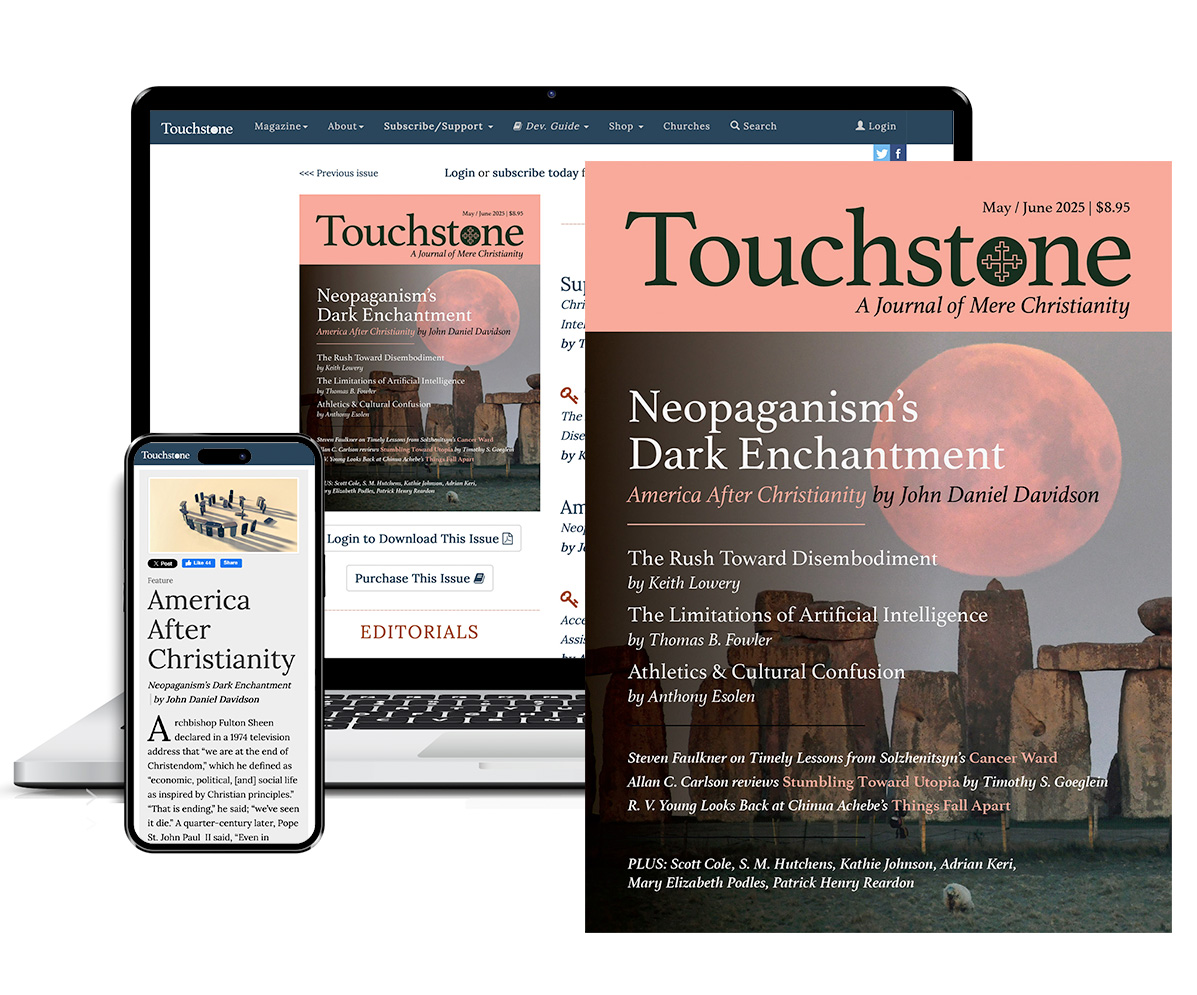
Get six issues (one year) of Touchstone PLUS full online access including pdf downloads for only $39.95. That's only $3.34 per month!
Order
Online Only
Subscription

Get a one-year full-access subscription to the Touchstone online archives for only $19.95. That's only $1.66 per month!
bulk subscriptions
Order Touchstone subscriptions in bulk and save $10 per sub! Each subscription includes 6 issues of Touchstone plus full online access to touchstonemag.com—including archives, videos, and pdf downloads of recent issues for only $29.95 each! Great for churches or study groups.
Transactions will be processed on a secure server.
more on imagination from the online archives

11.5—September/October 1998
Speaking the Truths Only the Imagination May Grasp
An Essay on Myth & 'Real Life' by Stratford Caldecott
more from the online archives

27.6—Nov/Dec 2014
Tales of Forbidden Stereotypes
Real-Life Men & Women & the Tragic Loss of Human Comedy by Anthony Esolen
calling all readers
Please Donate
"There are magazines worth reading but few worth saving . . . Touchstone is just such a magazine."
—Alice von Hildebrand
"Here we do not concede one square millimeter of territory to falsehood, folly, contemporary sentimentality, or fashion. We speak the truth, and let God be our judge. . . . Touchstone is the one committedly Christian conservative journal."
—Anthony Esolen, Touchstone senior editor



